Wonderful Whitby
Whitby Abbey
The magnificent ruins of Whitby Abbey dominate the town of Whitby below. The abbey was founded in 657 AD by the Saxon king of Northumbria. Lady Hilda was appointed as Abbess of the double monestry of Benedictine monks and nuns. Whitby Abbey was abandoned in 867 AD after a Viking attack. The ruins which remain, are the Church of the Benedictine Abbey founded by the Normans and begun in 1220 in the Early English style of Gothic. In 1540 Whitby Abbey was destroyed by Henry VIII, and the abbey buildings fell into ruins. The abbey's west front was hit by German naval shelling in 1914.
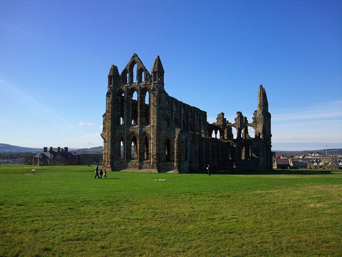
Whitby Abbey
The impressive ruins of Whitby Abbey have breathtaking panoramic views of the town of Whitby and the surrounding coastline. From Whitby Harbour the abbey can be reached on foot via the 199 Abbey Steps up the East Cliff, and through the church yard of St Mary's Church. Alternatively a well signposted road leads from the towns outskirts to the clifftop location, see map below. There is chargeable parking close to the abbey grounds.
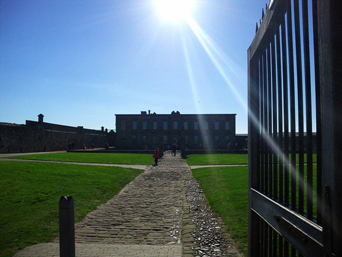
Whitby Abbey Visitors Centre
Near the abbey ruins are the remains of the Cholmley family mansion, built after Henry VIII supresssion of the abbey. The impressive classical facade now houses an award winning visitor's centre. The centre displays fascinating finds from Anglo-saxon, medieval and the Cholmley periods. There are many interactive activites and an audio tour of the abbey grounds. To find out more information on Whitby Abbey, including opening times, prices, access and facilities, click on the link to the official English Heritage website.
St Mary's Church
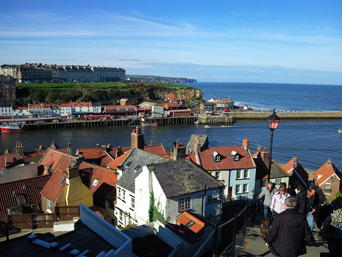
The 199 Abbey Steps
St Mary's Church perches upon the high cliff top, overlooking Whitby. At the top of the 199 Steps, you are first greeted by Caedmon's Cross, a memorial dedicated to Caedmon, one of the earliest English poets. St Mary's Churchyard surrounds the small church, and is filled with aged and weathered tombstones and monuments to sailors, fishermen and lifeboat men. If you look closely you may see some graves marked with a skull and crossbones.
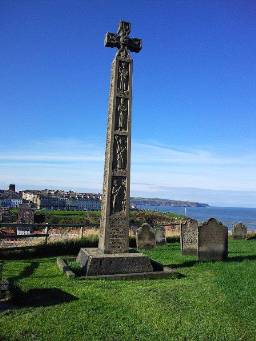
Caedmon's Cross Memorial
The oldest parts of St Mary's Church, the tower and basic structure are Norman, from around 1110 AD. However, there have been various modifications and extensions added over the centuries. The interior of the church is a 'hodge podge' of many different era's, although most is from the 18th century. It contains one of the most complete sets of pre-Victorian furnishings in England. The nave is filled with box pews, each furnished with a carpeted floor and upholstered cushions. A three storey pulpit was built with eartrumpets, that enabled the hearing impaired wife of a rector to listen to her husbands sermons!
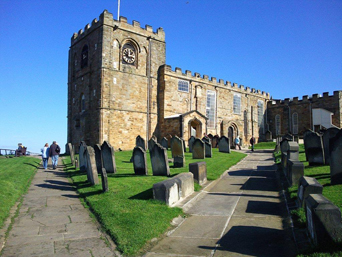
St Mary's Church and graveyard
The views from the churchyard are spectacular. On a clear day, most of Whitby's west side is visible, with views over the harbour and along the coast to Sandsend. There are a number of benches along the cliff top, where you can take a well earned rest and enjoy the panorama.
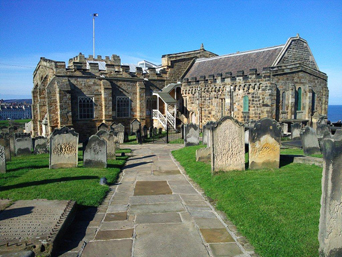
St Mary's Church and graveyard
Panoramic views from Whitby's East Cliff

Tombstones of St Mary's churchyard overlooking Whitby's West Cliff

View overlooking Whitby's West Cliff
